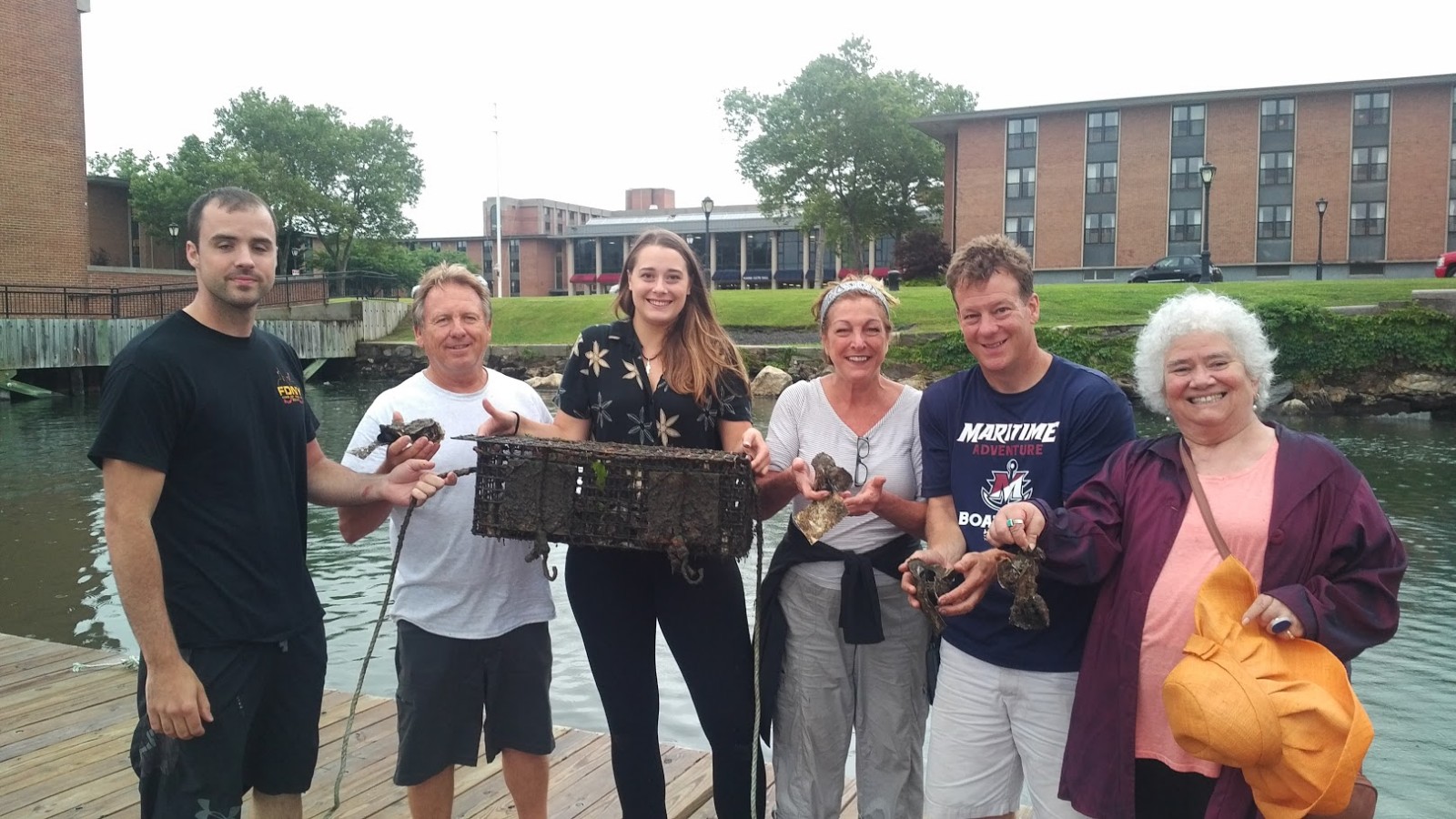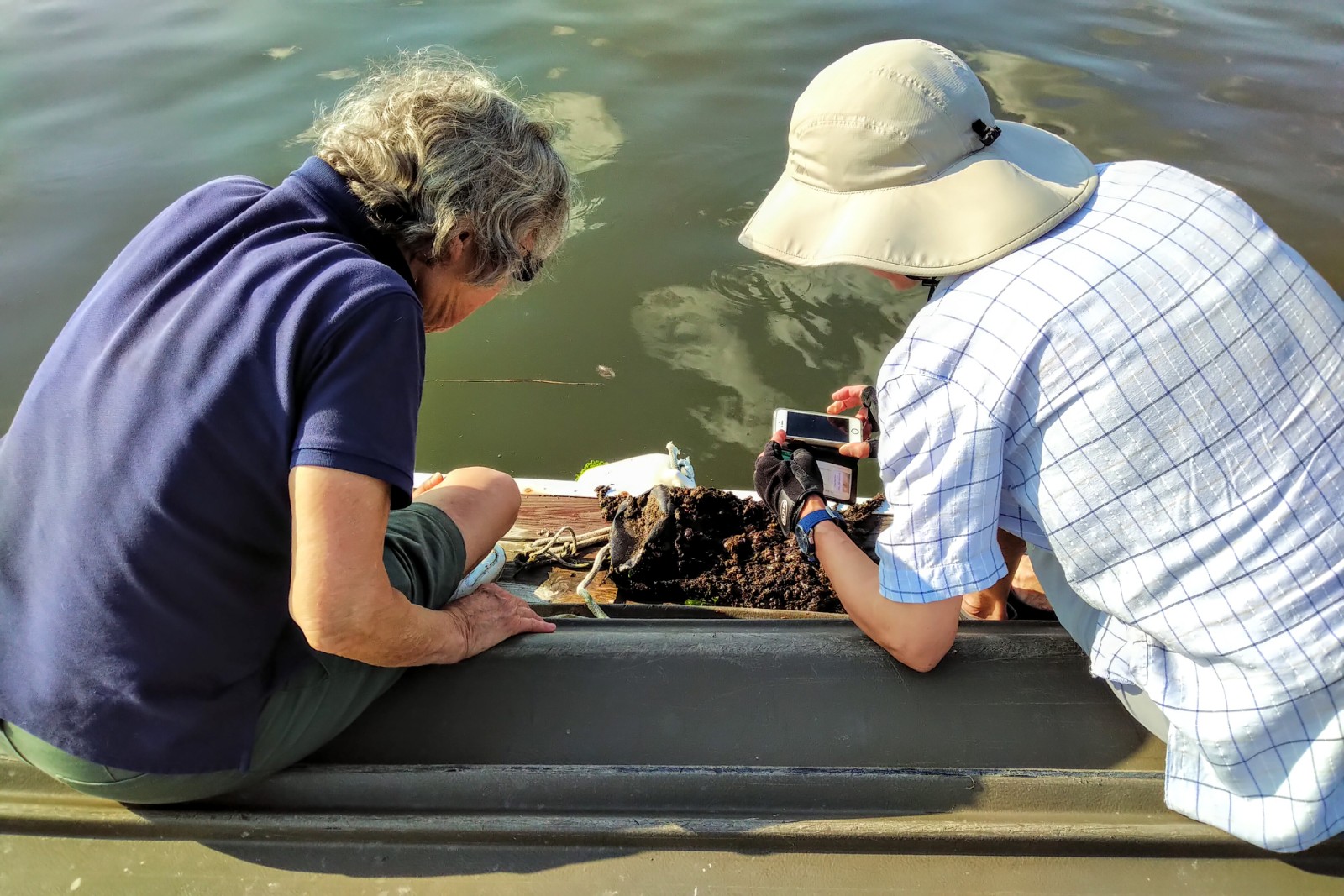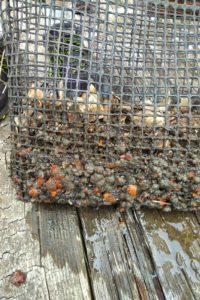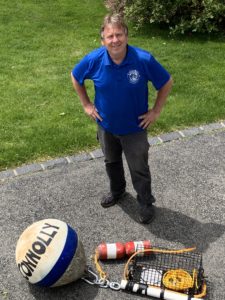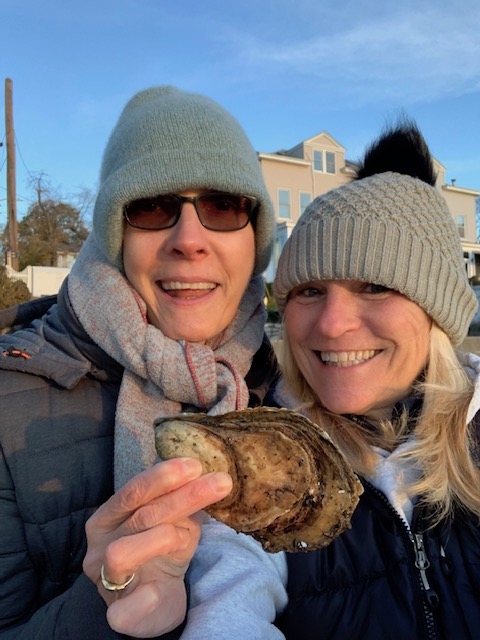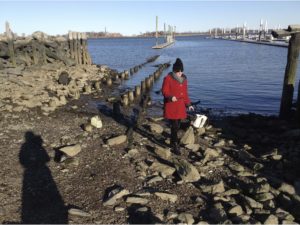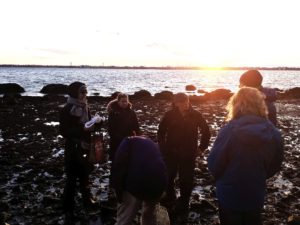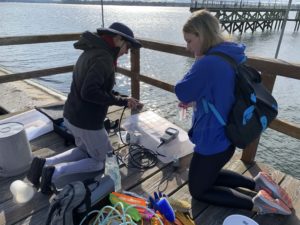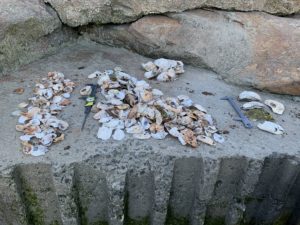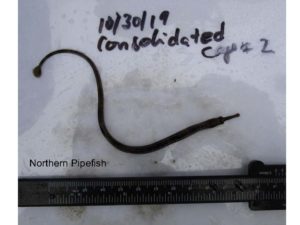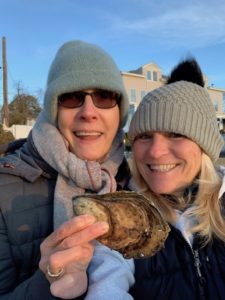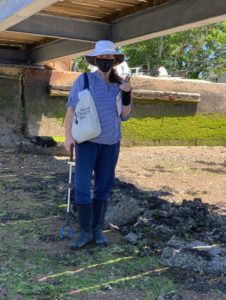Beach Surveys
In order to identify the location and abundance of oysters along the rocky and sandy shoreline of City Island, the first step was to document existing oyster populations. In 2019 and 2020, CIOR volunteers conducted beach surveys at low tide on a monthly basis to identify living oysters attached or not attached to substrate, as well as dead oyster shells, and all were counted and measured.
Dive Surveys
In order to identify suitable sites for eventual reef restoration, divers regularly explore the shoreline of City Island and nearby locations to evaluate bottom substrate conditions. Naturally existing hard-bottom surface structure represents an ideal settlement surface for oyster larvae dispersed in the water during the spawning season and should be protected by our restoration efforts in order to promote reef enhancement. During surveys we record information regarding the dominant substrate type (soft or hard bottom), topography (slope), and number of live oysters and other bivalves on an underwater tablet. The divers also identify where wild oysters are located and structures such as shipwrecks, rocks, or cut pilings.
The dive survey technique is based on a search-and-recovery method used by law enforcement, specifically the NYPD Harbor Unit’s Scuba Team. It enables divers to do methodical searches in low-visibility conditions while maintaining their orientation. This technique yields a thorough investigation of site conditions for projects such as the Long Island Sound Futures Fund Oyster Reef Project.
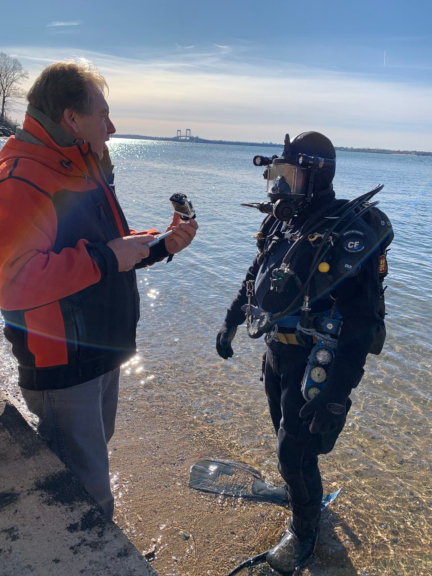
Water-Quality Monitoring
Water quality fluctuates throughout the season and depends on location. Using water-quality measurement instruments at regular intervals, CIOR measures basic parameters around City Island, including water temperature, acidity or alkalinity of the water (pH), salinity, dissolved oxygen, turbidity, and water current velocity and tidal flow.
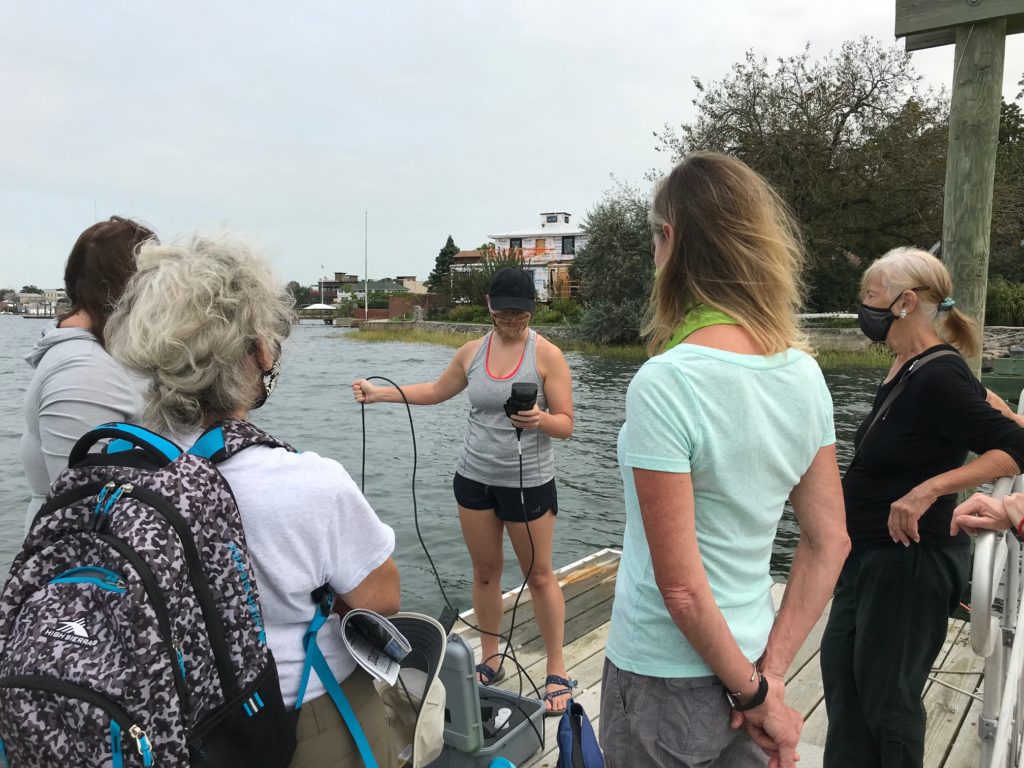
Oyster Research Stations
Oyster Research Stations (ORS): The first steps in CIOR’s restoration efforts began in our partnership with the Billion Oyster Project to deploy these stations at four strategically placed locations around City Island. The ORS cages are filled with cured shell material that has been seeded with oyster spat and are then attached to and hung off docks or moorings at different locations around City Island. BOP supplies spat-covered shells, but in the past two years, CIOR has collected and cured shells from City Island restaurants and transferred them to the Cornell Cooperative Extension in Southold on Long Island, where spat is put on the shells and returned to City Island for placement in ORS cages. CIOR members and eco-volunteers monitor the growth and mortality of the oysters in the cages on a regular basis from May to October.
Biodiversity Monitoring
At the same time that the ORS cages are being inspected for oyster growth and mortality, volunteers also count, identify, and document other species found in the cages, monitoring the range of biodiversity in the waters around City Island on an ongoing basis. This practice began in the summer of 2019, when mesh plastic bags filled with cured oyster shells were hung from docks and moorings at five different locations, each bag exposed to different water conditions and flow. The cages were suspended above the bottom but remained fully submerged at low tide. Now CIOR uses Oyster Research Stations (ORS), provided by the Billion Oyster Project, which contain live oysters. These cages are monitored regularly, and the different species they attract, including oyster juveniles, are collected and analyzed. A wide range of species has been counted, measured, and photographed—from invertebrates such as tunicates and bryozoans to larger vertebrates, including eels and blackfish, as well as oyster predators (mud crabs and oyster drills) and oyster toadfish, which feed on crabs and snails. More than 1,000 animals comprising 33 different species were counted and measured during the 2022 season.








